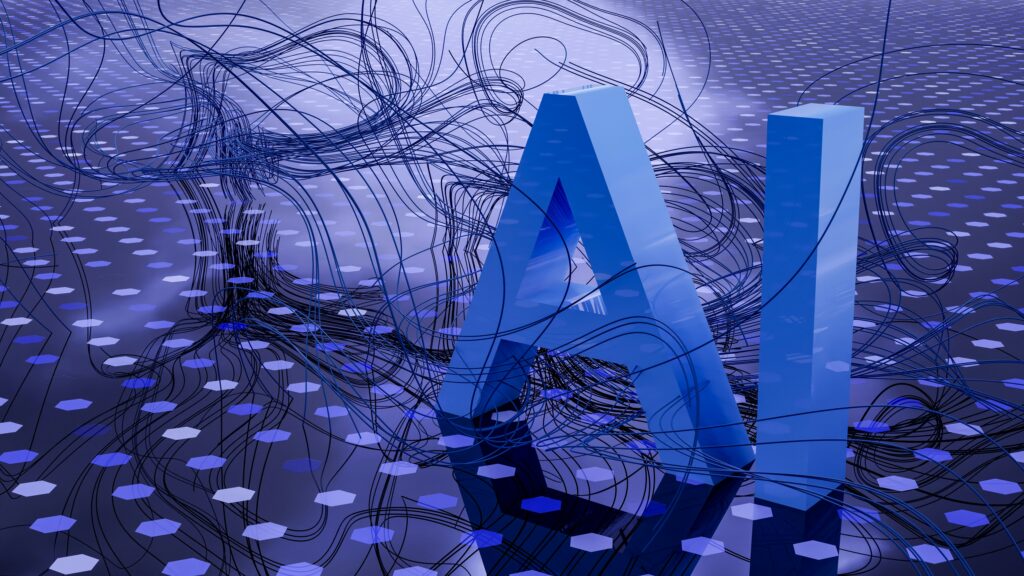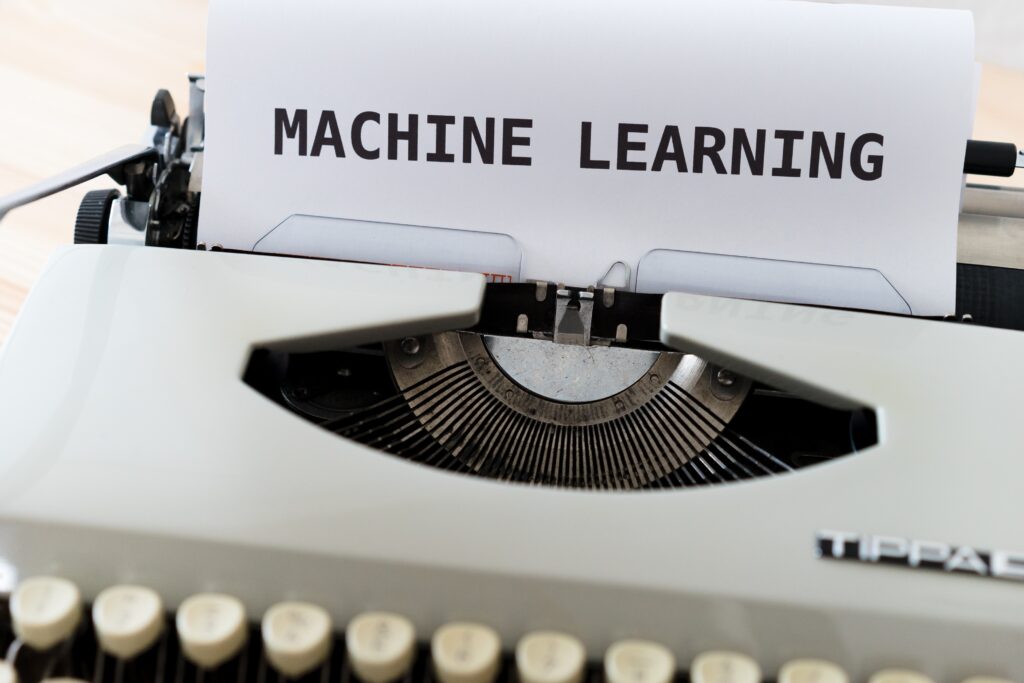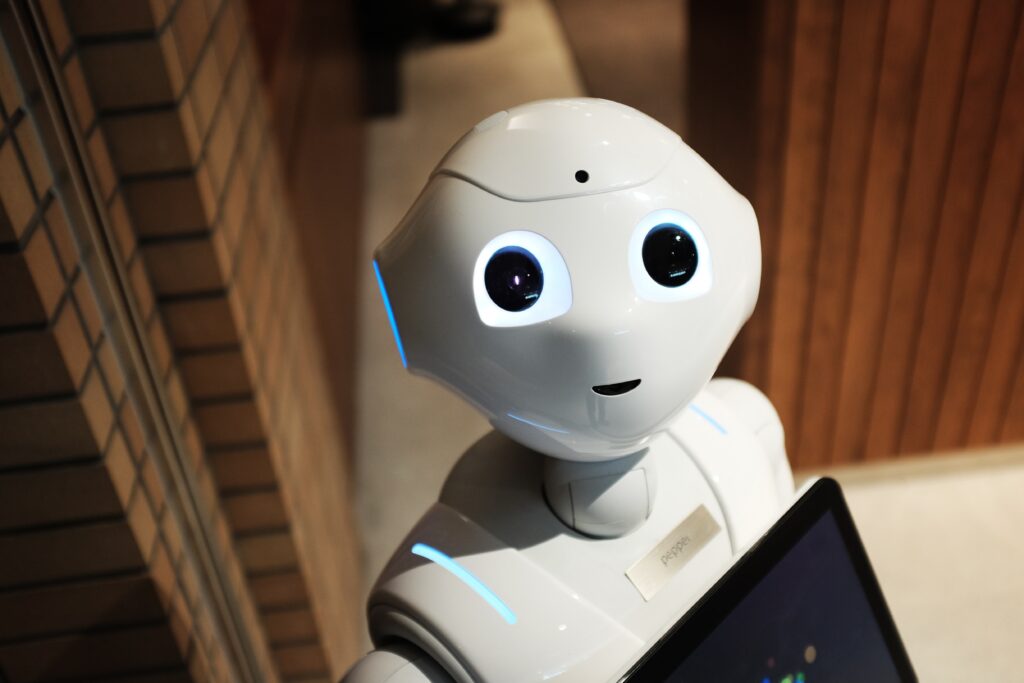As we continue to witness the rapid advancement of technology, it’s almost impossible to ignore the impact that artificial intelligence (AI) has had on our daily lives.

From voice assistants like Siri and Alexa to personalized product recommendations and self-driving cars, AI has become an integral part of the consumer experience. But how did we get here?
In this blog post, we’ll take a brief look at the history of AI computing and its evolution on the consumer side, exploring its growth and potential future impact.
The Dawn of Artificial Intelligence
Artificial Intelligence (AI) has undoubtedly become a buzzword in recent years, but its roots can be traced back to the mid-20th century. The term “artificial intelligence” was coined by John McCarthy, an American computer scientist, in 1956, during the Dartmouth Conference.
This conference marked a significant milestone in the history of AI, as it brought together researchers and experts from various fields to explore the possibilities of creating intelligent machines.
However, the concept of AI dates back even further. In the 1940s and 1950s, a group of mathematicians and computer scientists, including Alan Turing, were working on developing the theoretical foundations of AI. Turing, in particular, proposed the idea of a universal machine that could simulate any other machine’s computation, laying the groundwork for future AI development.
In the early days of AI, researchers focused on building rule-based systems that could mimic human reasoning. These early AI systems were often limited in their capabilities and relied heavily on explicit instructions provided by programmers. While they showed promise, the complexity of human intelligence proved to be a challenging problem to solve.

As computing power increased, so did the possibilities for AI. In the 1960s and 1970s, researchers began to explore machine learning techniques, which allowed computers to learn from data and improve their performance over time.
This marked a significant shift in AI development, as it moved away from relying solely on explicit programming towards a more data-driven approach.
The rise of enterprise datacenters and the development of more powerful processors in the 1980s and 1990s further accelerated the progress of AI. With access to larger datasets and faster computing resources, researchers were able to train more complex AI models and tackle more ambitious problems.
This period also saw advancements in natural language processing and computer vision, paving the way for AI technologies we see today, such as voice assistants and image recognition systems.
Looking towards the future, the possibilities for AI seem limitless. Advancements in areas like deep learning, neural networks, and reinforcement learning have opened up new frontiers for AI research. As technology continues to evolve, AI is expected to play a significant role in shaping our daily lives and industries, from healthcare and finance to transportation and entertainment.
The Roller Coaster Ride of AI Development

As the field of artificial intelligence (AI) developed, it experienced a roller coaster ride of progress and setbacks. Throughout the years, researchers and scientists faced challenges and made significant breakthroughs, paving the way for the AI technologies we see today.
In the early days of AI, researchers focused on building rule-based systems that could mimic human reasoning. These early AI systems showed promise but were often limited in their capabilities and relied heavily on explicit instructions provided by programmers. As a result, they struggled to replicate the complexity of human intelligence.
However, advancements in computing power during the 1960s and 1970s led to a shift in AI development. Researchers began exploring machine learning techniques, which allowed computers to learn from data and improve their performance over time.
This marked a significant turning point, as AI moved away from relying solely on explicit programming and embraced a more data-driven approach.
The rise of enterprise datacenters and the development of more powerful processors in the 1980s and 1990s further accelerated AI’s progress.
With access to larger datasets and faster computing resources, researchers were able to train more complex AI models and tackle more ambitious problems. This period also saw advancements in natural language processing and computer vision, paving the way for AI technologies such as voice assistants and image recognition systems.
However, despite these advancements, AI development faced its fair share of setbacks. In the late 1980s and early 1990s, there was a period known as the “AI winter.” During this time, AI research funding declined, and interest in the field waned. Many researchers and companies shifted their focus away from AI, leading to a temporary stagnation in its development.
Fortunately, AI made a resurgence in the late 1990s and early 2000s. Breakthroughs in areas like machine learning algorithms and computational power reignited interest and investment in the field. AI technologies started to become more integrated into everyday life, with applications ranging from speech recognition to recommendation systems.

Looking towards the future, AI continues to hold great promise. Advancements in areas like deep learning, neural networks, and reinforcement learning have opened up new frontiers for AI research. With ongoing developments and innovations, the future of AI looks bright, with potential applications in fields such as healthcare, finance, transportation, and entertainment.
The roller coaster ride of AI development has been filled with challenges, setbacks, and breakthroughs. Yet, with each hurdle overcome, AI has continued to evolve and transform the world around us. As we move forward, it’s exciting to envision the potential future impact of AI and the possibilities it holds for shaping our society.
The Emergence of Machine Learning
The emergence of machine learning marked a significant turning point in the field of artificial intelligence (AI). While early AI systems relied heavily on explicit programming, machine learning introduced a new approach that allowed computers to learn from data and improve their performance over time.
One of the key drivers behind the emergence of machine learning was the rise of enterprise datacenters in the 1980s and 1990s. These datacenters provided researchers with access to vast amounts of data and powerful computing resources, which were crucial for training more complex AI models.

With larger datasets and faster processors, machine learning algorithms could analyze and identify patterns in data more efficiently.
Machine learning techniques started to gain traction in various domains. Natural language processing, for example, benefited greatly from the emergence of machine learning.
By analyzing large corpora of text, machine learning algorithms could automatically extract meaning and context from written language, enabling advancements in areas like machine translation, sentiment analysis, and text summarization.
Computer vision also experienced a revolution with the emergence of machine learning. By training AI models on large image datasets, researchers could develop systems that could recognize and interpret visual content. This breakthrough led to significant advancements in applications such as object detection, image classification, and facial recognition.
Another important development in the emergence of machine learning was the introduction of the concept of deep learning. Deep learning is a subfield of machine learning that focuses on training artificial neural networks with multiple layers of interconnected nodes.
This approach allows AI models to automatically learn hierarchical representations of data, enabling them to perform complex tasks like image and speech recognition.
Looking to the future, machine learning continues to push the boundaries of what AI can achieve. Ongoing research and advancements in areas like deep learning, neural networks, and reinforcement learning hold great promise for the development of more sophisticated AI systems.
With the increasing availability of big data and the ever-growing computing power, the future of machine learning looks bright.
AI’s Impact on Industries
The impact of artificial intelligence (AI) on industries cannot be overstated. With advancements in technology and the emergence of machine learning, AI has the potential to revolutionize various sectors, from healthcare to finance and beyond.
One industry that has been significantly influenced by AI is healthcare. With the help of AI, medical professionals can analyze vast amounts of patient data to make more accurate diagnoses and develop personalized treatment plans.

AI-powered systems can also assist in the early detection of diseases, improving patient outcomes. In addition, AI has the potential to automate routine tasks in healthcare, such as medical transcription and appointment scheduling, freeing up healthcare professionals to focus on more critical tasks.
The financial industry is another sector where AI is making waves. AI-powered algorithms can analyze large amounts of financial data to identify patterns and trends, helping financial institutions make informed investment decisions. AI can also assist in detecting fraud and minimizing risk in the banking sector.
Additionally, chatbots and virtual assistants powered by AI can provide customer support, enhancing the overall customer experience in the financial industry.
Transportation is another area that is being transformed by AI.
Self-driving cars, enabled by AI technologies such as computer vision and machine learning, have the potential to revolutionize transportation systems, making them safer and more efficient. AI-powered traffic management systems can also help optimize traffic flow, reducing congestion and improving commute times.
Furthermore, AI can assist in predictive maintenance, helping to identify and address potential issues before they cause major disruptions.
The entertainment industry is also benefiting from AI advancements. AI-powered recommendation systems are now commonplace in streaming platforms like Netflix and Spotify, providing users with personalized content suggestions based on their preferences.
AI can also be used in content creation, enabling artists to enhance their creative process and generate innovative content.
Looking to the future, the impact of AI on industries is expected to grow even further. As technology continues to evolve, AI will play a crucial role in driving innovation and efficiency across various sectors. Enterprises are investing in building AI capabilities, utilizing enterprise datacenters to harness the power of big data and train more sophisticated AI models.
The possibilities for AI are limitless, and its impact on industries is likely to shape the future of work and the global economy.
In summary, the impact of AI on industries cannot be ignored. From healthcare to finance, transportation, and entertainment, AI is revolutionizing the way we work and live. With ongoing advancements in technology, AI’s impact on industries is expected to continue growing, paving the way for a more innovative and efficient future. As we embrace the potential of AI, it is crucial to navigate its implications responsibly and ensure that it is leveraged to benefit society as a whole.
AI Now and Into the Future
As we look to the future, the impact and potential of artificial intelligence (AI) continue to expand. With advancements in technology and the growing availability of big data, AI is poised to revolutionize industries and shape our daily lives in ways we never thought possible.
One area where AI is expected to have a significant impact is in enterprise datacenters. These centers, with their powerful computing resources and access to vast amounts of data, are becoming the driving force behind AI development. Companies are investing heavily in building AI capabilities within their datacenters, enabling them to harness the power of big data and train more sophisticated AI models.
As a result, we can expect to see even more innovative AI applications emerge, revolutionizing industries and improving efficiency in areas such as healthcare, finance, transportation, and entertainment.

In healthcare, for example, the integration of AI in datacenters has the potential to transform the way medical professionals diagnose and treat patients. With AI-powered systems analyzing vast amounts of patient data, doctors can make more accurate diagnoses and develop personalized treatment plans. AI can also assist in early disease detection, leading to better patient outcomes.
By automating routine tasks such as medical transcription and appointment scheduling, AI frees up healthcare professionals to focus on critical tasks and improve overall patient care.
The financial industry is also ripe for AI transformation. By analyzing large amounts of financial data, AI algorithms can identify patterns and trends, helping financial institutions make informed investment decisions and minimize risk. AI can also play a crucial role in fraud detection, enhancing the security and trustworthiness of the banking sector. Chatbots and virtual assistants powered by AI can provide customer support, improving the overall customer experience in the financial industry.
Transportation is another area where AI is set to revolutionize the future. Self-driving cars, enabled by AI technologies like computer vision and machine learning, have the potential to make transportation systems safer and more efficient. AI-powered traffic management systems can optimize traffic flow, reducing congestion and improving commute times. Additionally, predictive maintenance systems can help identify and address potential issues in transportation infrastructure before they cause major disruptions.

The entertainment industry is already seeing the impact of AI, with recommendation systems providing personalized content suggestions to users based on their preferences. As AI continues to advance, we can expect even more innovations in content creation and consumption. AI-powered systems may enhance the creative process for artists, enabling them to generate innovative and engaging content for audiences worldwide.
Looking to the future, AI’s potential seems limitless. With ongoing developments in areas like deep learning, neural networks, and reinforcement learning, the possibilities for AI continue to expand. From healthcare to finance, transportation to entertainment, AI’s impact on industries and our daily lives will only continue to grow.
